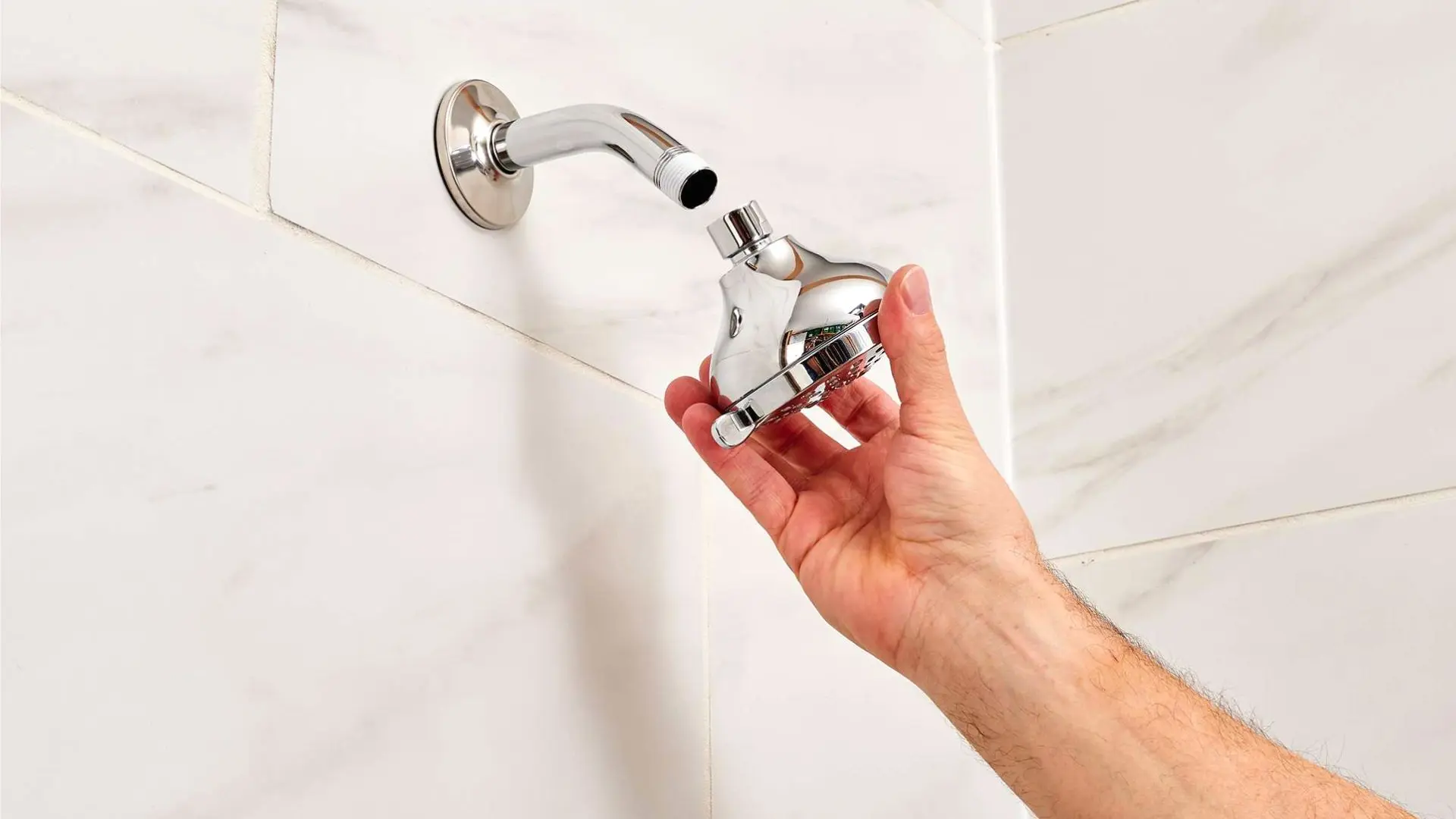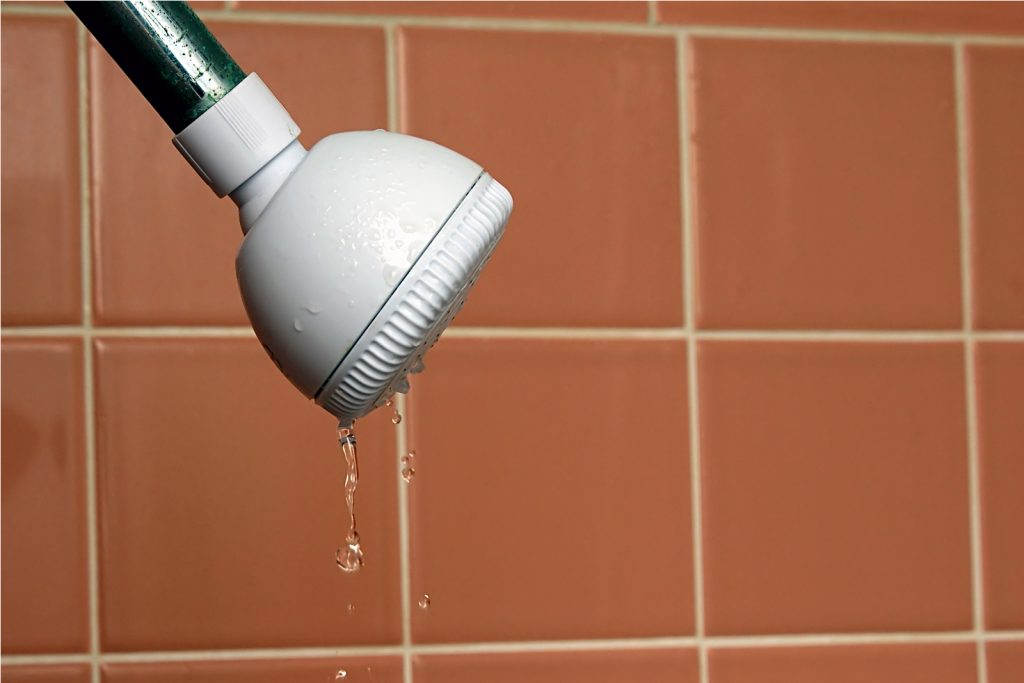Understanding the Problem: Bathroom Shower Head Leaking

A leaky shower head can be a real pain, both literally and figuratively. It can lead to a frustrating drip-drip-drip, a constant spray, or even a full-blown flood. But before you start tearing apart your bathroom, it’s important to understand what’s causing the leak and what kind of leak you’re dealing with.
Common Causes of Shower Head Leaks
Shower head leaks can be caused by a variety of factors, including:
- Worn-out O-rings: These small rubber rings are essential for creating a watertight seal between the shower head and the pipe. Over time, they can become cracked, brittle, or worn out, allowing water to leak.
- Clogged Aerator: The aerator is a small part at the end of the shower head that mixes air with water to create a more pleasant shower experience. If it becomes clogged with mineral deposits or debris, it can restrict water flow and cause leaks.
- Loose or Damaged Shower Arm: The shower arm is the pipe that connects the shower head to the wall. If it’s loose or damaged, it can cause water to leak at the connection point.
- Corrosion or Mineral Buildup: Over time, mineral deposits from hard water can build up inside the shower head, causing leaks or restricting water flow.
- Damaged Shower Head Components: Internal components of the shower head, such as the valve or the spray nozzles, can become damaged or worn out, leading to leaks.
Identifying the Type of Leak
Identifying the type of leak can help you narrow down the possible causes and make it easier to fix. Here are some common types of shower head leaks:
- Dripping: This is usually caused by a worn-out O-ring or a clogged aerator. The water drips continuously, even when the shower is not in use.
- Spraying: This is often caused by a loose or damaged shower arm or a damaged shower head component. Water sprays out from the connection point or from the shower head itself.
- Constant Flow: This is a more serious problem that can be caused by a broken valve or a leak in the pipe connecting the shower head to the water supply. Water flows continuously, even when the shower is turned off.
Consequences of Ignoring a Leaky Shower Head, Bathroom shower head leaking
Ignoring a leaky shower head can have several negative consequences:
- Increased Water Bills: A leaky shower head can waste a significant amount of water, leading to higher water bills.
- Water Damage: A constant leak can cause water damage to your bathroom, ceiling, and walls.
- Mold and Mildew Growth: Moisture from a leaky shower head can create a breeding ground for mold and mildew, which can pose health risks.
- Structural Damage: In severe cases, a leaky shower head can lead to structural damage to your home.
Troubleshooting and Repair
/DrippingShowerhead-1f9b0d3862014a47973d2651e31547e8.jpg)
A leaky shower head can be a real pain, but before you call a plumber, let’s try a few things ourselves. Armed with the right tools and a bit of know-how, you might be able to fix it yourself and save some cash!
Inspecting the Shower Head
First, we need to figure out what’s causing the leak. This is like detective work, but instead of looking for clues, we’re looking for drips!
Before you start, make sure the water supply is turned off. Then, take a closer look at your shower head.
- Check for loose or cracked parts: Look for any signs of damage, like cracks or loose connections. If you see anything suspicious, it’s time to replace the shower head.
- Examine the shower head’s internal components: If you have a removable shower head, unscrew it and take a look inside. You might see a rubber washer, O-ring, or other parts that could be worn out. If you spot a culprit, it’s time to replace it.
- Inspect the shower arm connection: The shower head connects to the shower arm. Make sure the connection is tight. If it’s loose, you can try tightening it with a wrench. If that doesn’t work, you might need to replace the shower arm.
Tightening or Replacing Components
If you’ve found the culprit, it’s time to fix it! But before you start, remember to turn off the water supply.
- Tightening components: If you find a loose connection, you can try tightening it with a wrench. Be careful not to overtighten it, as this could damage the shower head.
- Replacing components: If you need to replace a component, make sure you get the right replacement part. You can find these at most hardware stores.
- Installing the new component: Once you have the new component, simply install it according to the manufacturer’s instructions. Make sure the connection is tight, but don’t overtighten it.
Shower Head Types
There are different types of shower heads, each with its own design and features.
| Shower Head Type | Suitability for Leak Repair |
|---|---|
| Fixed Shower Head | Easy to repair. Typically, these have fewer parts and simpler designs, making it easier to identify and replace faulty components. |
| Handheld Shower Head | Can be a bit trickier to repair. They often have more parts, making it harder to isolate the source of the leak. |
| Rainfall Shower Head | Can be challenging to repair. The intricate design and multiple components can make it difficult to find the source of the leak. |
Prevention and Maintenance

A leaking shower head can be a real pain, but with a little preventative maintenance, you can avoid the hassle of a leaky shower head. Here’s a guide to keeping your shower head in tip-top shape.
Regular Cleaning
Regular cleaning is crucial to prevent mineral buildup and ensure optimal water flow. Mineral buildup, especially from hard water, can clog the shower head’s spray holes and restrict water flow.
“Hard water is a common problem in many areas, and it can leave behind mineral deposits that can clog your shower head over time.”
- Monthly Cleaning: A quick monthly cleaning is usually sufficient. You can use a vinegar solution or a commercial shower head cleaner. Simply fill a plastic bag with vinegar, tie it around the shower head, and let it soak for an hour. Then, remove the bag and wipe away any remaining mineral deposits with a soft cloth.
- Deep Cleaning: If you notice a significant decrease in water pressure or see mineral buildup, a deep cleaning is necessary. Remove the shower head from the shower arm, soak it in vinegar for a few hours, and then scrub the spray holes with a small brush or a toothbrush. After cleaning, rinse the shower head thoroughly before reattaching it.
Bathroom shower head leaking – A leaky showerhead can be a frustrating and wasteful problem. If you’re dealing with a persistent drip, it might be time to consider upgrading your entire bathroom fixture. Investing in a high-quality tap can make a significant difference in both functionality and aesthetics.
Explore the options for best bathroom taps in India to find the perfect fit for your bathroom, and potentially eliminate the need for a new showerhead altogether.
A leaky bathroom shower head can be a frustrating problem, but it’s important to address it promptly to prevent water damage and save money on your water bill. While you’re tackling that plumbing issue, you might also want to consider investing in a new bathroom scale to track your progress towards your fitness goals.
If you’re looking for a reliable and accurate scale, be sure to check out our list of the best bathroom scales 2017 , which includes options for all budgets and needs. Once you’ve addressed the leaky shower head and upgraded your bathroom scale, you’ll be well on your way to a more comfortable and healthy home.